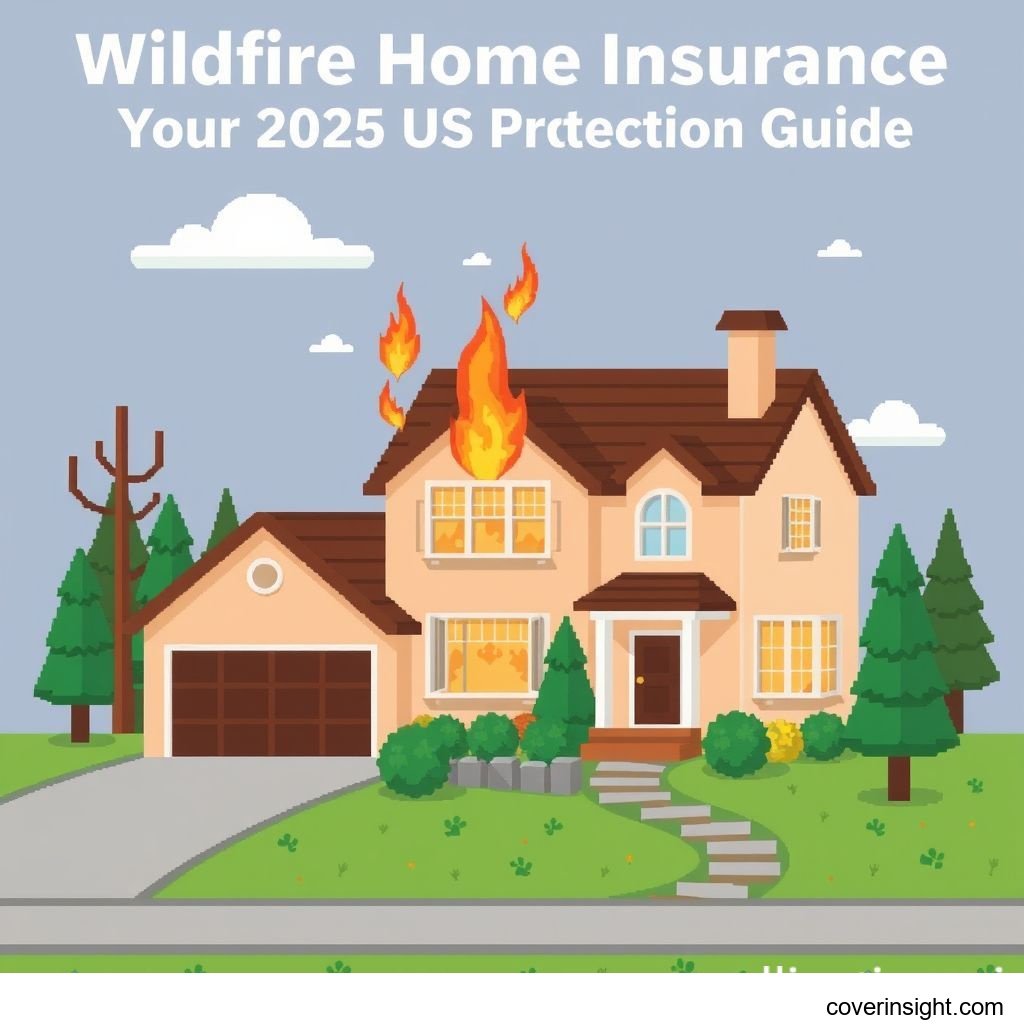Introduction
Wildfires continue to pose significant threats across the United States. As we look towards 2025, understanding your wildfire home insurance options is more critical than ever. Climate change contributes to increased fire intensity and frequency. Many homeowners face rising premiums or even non-renewals. This guide aims to demystify wildfire home insurance and help you secure proper protection. Concerns often revolve around affordability and sufficient coverage for catastrophic events. Homeowners worry if their current policy truly covers all potential damages.
Understanding Wildfire Home Insurance Coverage
Securing adequate wildfire home insurance is essential for homeowners in at-risk areas. This section delves into the specifics of what your policy should include. It also highlights common exclusions to watch for. Knowing these details ensures your protection is comprehensive.
What's Included
Most standard homeowners insurance policies offer some level of wildfire coverage. This typically falls under the "fire damage" peril. It covers direct damage to your dwelling and personal belongings. This includes damage from smoke, ash, and embers. Additional living expenses (ALE) are also often included. This pays for temporary housing if your home becomes uninhabitable. Ensure your wildfire home insurance explicitly details these provisions. Some policies may offer extended coverage for debris removal. This is crucial after a fire event. You can learn more about general insurance principles at Insurance Resources Global.
Common Exclusions
While wildfire home insurance provides crucial protection, certain exclusions are common. Landslides or mudslides, even if caused by previous wildfires, are often not covered. These perils usually require separate flood or earthquake policies. Damage from ongoing arson investigations might also complicate claims. Check your policy for specific language on uninsurable events. It is vital to understand these limitations upfront. Some policies might exclude damage if you fail to take reasonable preventative measures. This could include not clearing defensible space.
Cost Analysis and Premiums in 2025
The cost of wildfire home insurance is a significant concern for many. Premiums have been steadily increasing in high-risk regions. Understanding the factors that influence these costs can help you anticipate expenses. It also aids in finding ways to manage your budget.
Price Factors
Several elements determine your wildfire home insurance premium. Your home's location is perhaps the most significant. Properties in high wildfire risk insurance zones naturally face higher costs. The construction materials of your home also play a role. Fire-resistant materials can lead to lower premiums. The age and condition of your roof are equally important. Your home's proximity to a fire station affects your premium. A strong fire department can offer a discount on your policy. Your personal claims history will also impact your rates. More claims typically mean higher premium costs. Insurers assess the overall wildfire risk insurance in your area. This includes historical fire data and vegetation density. For instance, home insurance California wildfire rates are particularly sensitive to these factors. This reflects the state's ongoing challenges.
-
Location: Proximity to vegetation, historical fire activity.
-
Home Construction: Materials used, roof type, defensible space.
-
Fire Protection: Distance to fire department, water sources.
-
Deductible Amount: Higher deductibles can lower premiums.
-
Claims History: Past claims can increase future rates.
Saving on Your Wildfire Home Insurance
Managing the cost of wildfire home insurance is possible with proactive steps. There are several strategies homeowners can employ. These can lead to significant savings on your annual premium. Taking preventative measures is often key.
Firstly, focus on creating defensible space around your property. Clearing brush and maintaining vegetation significantly reduces wildfire risk insurance. This demonstrates proactive protection to insurers. Upgrading your home with fire-resistant materials can also lead to discounts. Consider features like non-combustible roofing or fire-rated siding. Many insurers offer incentives for these improvements. Bundling your wildfire home insurance with other policies, such as auto insurance, often provides discounts. Always shop around and compare quotes from multiple providers. The marketplace for wildfire home insurance changes annually. What was competitive last year may not be in 2025. Consulting with an independent agent can help you navigate options. They can often find the best policy for your specific needs. You can research state-specific regulations by visiting State Insurance Departments. This resource is provided by the National Association of Insurance Commissioners. Staying informed about your options is the best protection. Check your policy limits regularly. Ensure your coverage reflects your home's current value. This prevents being underinsured after a fire. This is especially true for home insurance California wildfire policies, where values can fluctuate.
Navigating the Market and Choosing a Policy
Choosing the right wildfire home insurance policy requires careful consideration. It is not just about finding the lowest premium. It's about securing adequate protection for your most valuable asset. Understand your specific needs before you begin your search. Consider the actual replacement cost of your home and belongings.
Reviewing an insurer's financial stability and customer service record is crucial. Look for companies with strong ratings and positive reviews. A reliable insurer will handle claims efficiently during stressful times. Discuss the specifics of wildfire home insurance with potential providers. Ask about the claims process and response times. Some insurers specialize in wildfire risk insurance. They might offer more tailored coverage options. They may also have better resources for high-risk areas. Don't hesitate to ask questions about potential future premium increases. Inquire about any programs or discounts for mitigation efforts. This proactive approach helps you make an informed decision. For more general guidance on U.S. insurance, visit US Insurance Home.
FAQs
How much does wildfire home insurance cost in US?
The cost of wildfire home insurance varies widely across the US. It depends heavily on your location, home value, and specific risk factors. Premiums can range from a few hundred dollars to several thousand annually. Homes in high-risk zones, such as parts of California, may face significantly higher costs. For instance, home insurance California wildfire rates reflect elevated exposure.
What affects wildfire home insurance premiums?
Many factors influence your wildfire home insurance premium. Key elements include your property's proximity to dense vegetation and historical wildfire activity. Your home's construction materials, roof type, and defensible space also play a role. Your claims history and the specific coverage limits you choose will impact the cost. The deductible amount on your policy also affects the premium.
Is wildfire home insurance mandatory in US?
No, wildfire home insurance is not legally mandatory nationwide. However, if you have a mortgage, your lender will almost certainly require it. They need to protect their investment. In high-risk areas, finding wildfire home insurance can be challenging. Some homeowners may need to seek coverage through state-specific fair plans or surplus lines insurers. This ensures continued protection.
How to choose the best wildfire home insurance policy?
Choosing the best wildfire home insurance policy involves several steps. First, assess your property's specific wildfire risk insurance. Then, compare quotes from multiple reputable insurers. Look for comprehensive coverage that includes dwelling, personal property, and additional living expenses. Consider the insurer's financial stability and customer service reputation. Prioritize a policy that offers discounts for mitigation efforts. For broader insurance information, check US Insurance Home.
What happens if you don’t have wildfire home insurance in US?
If you don't have wildfire home insurance and your home is damaged by fire, you will be solely responsible for all repair or rebuilding costs. This can be financially devastating. If you have a mortgage, not having required protection can lead to your lender force-placing expensive coverage. This is known as "lender-placed insurance." This often provides less coverage at a higher premium. This situation can put your home and financial future at severe risk. It underscores the critical need for adequate wildfire home insurance.






Comments